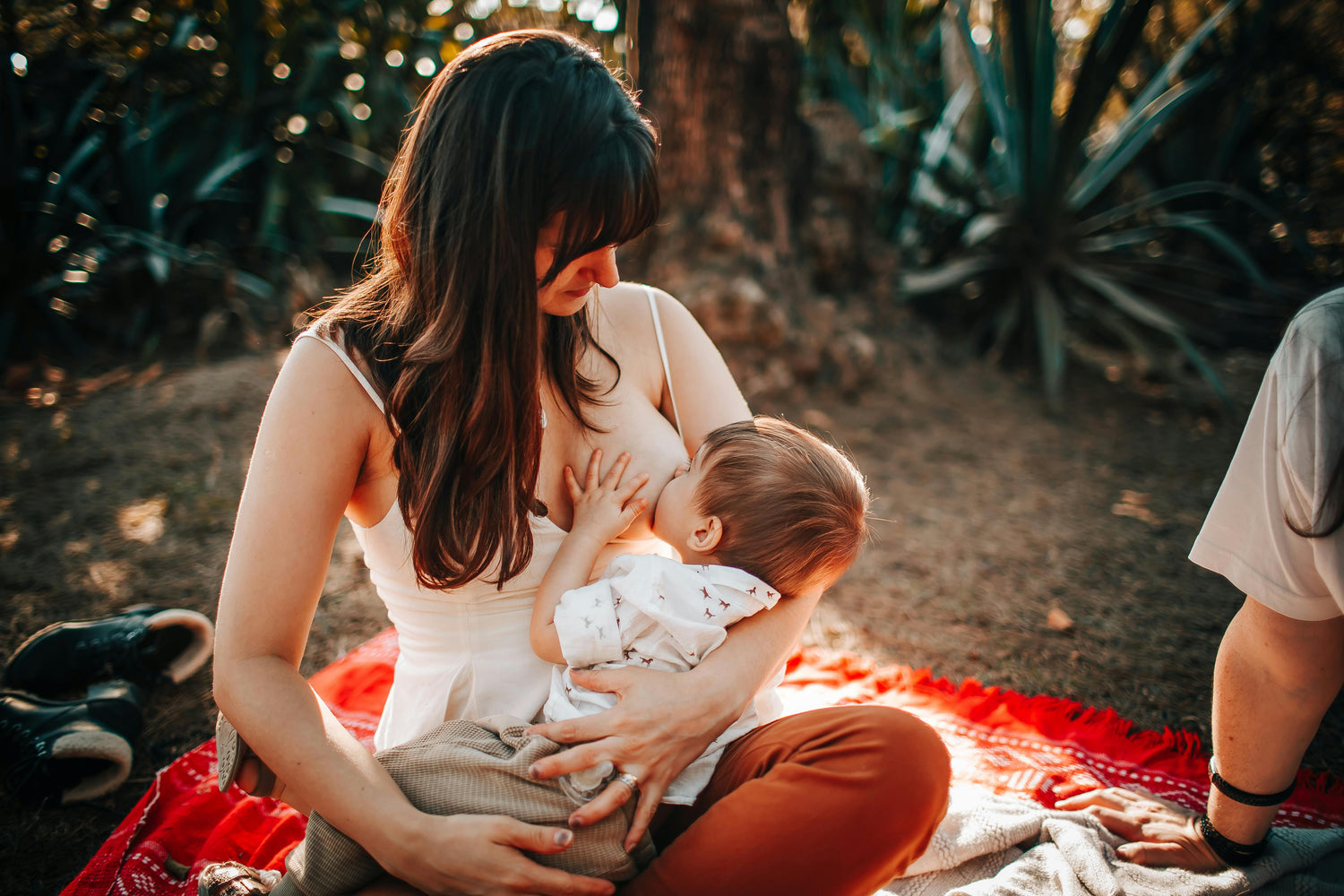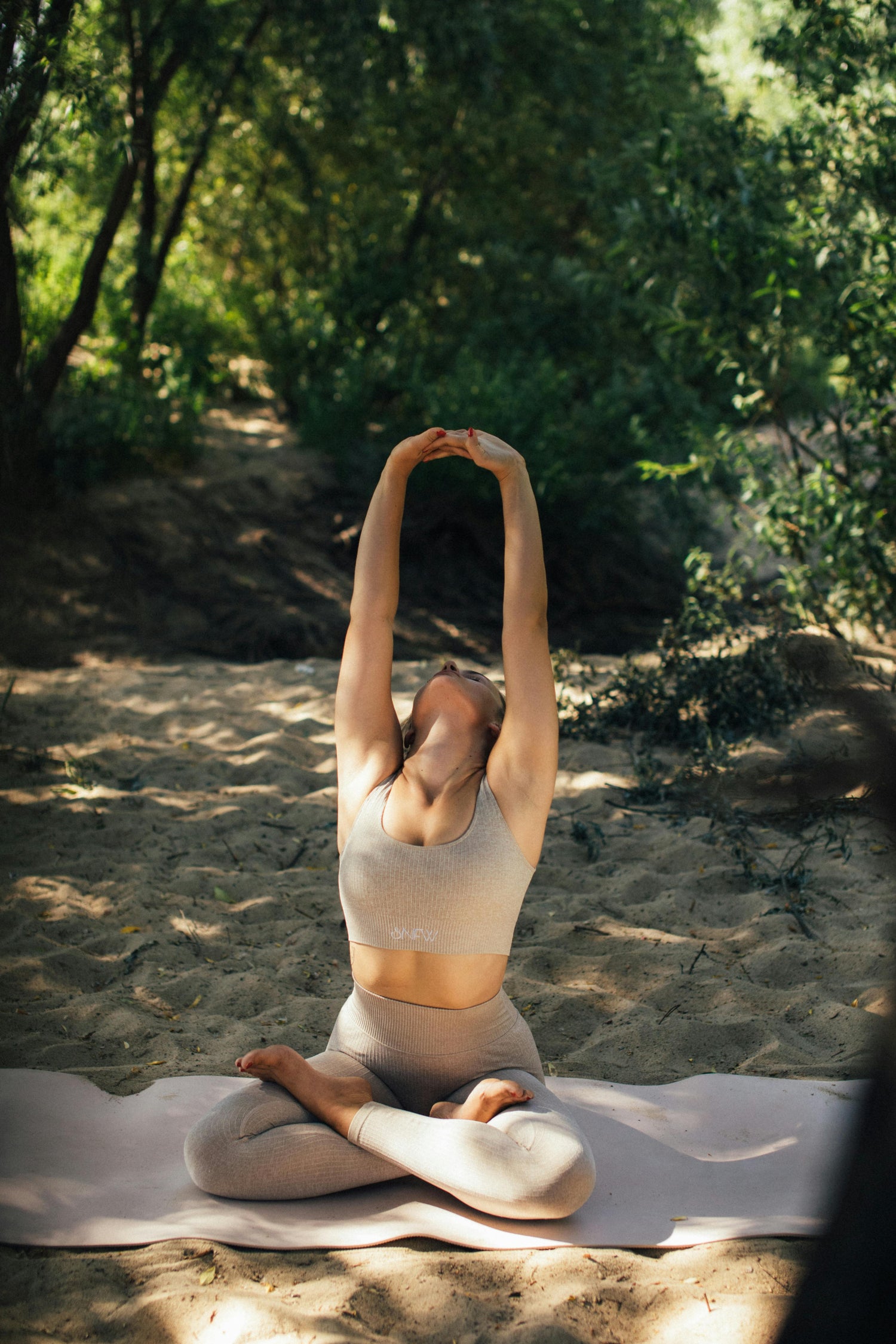YOGA AND WORLD HEALTH DAY 2025
This year, World Health Day—celebrated on April 7 —honors maternal and newborn health. Yoga, with its gentleness, depth, and ability to connect, is a valuable resource for supporting pregnancy, childbirth, and the postpartum period. A holistic practice that supports the body, calms the mind, and nourishes the sacred bond between mother and child.
Written by TINA - April 2025
Collapsible content
Reading time
About 10 minutes
WHAT YOU ARE ABOUT TO DISCOVER
• What yoga reveals about the founding link between breath and birth
• How prenatal yoga supports pregnancy, childbirth, and the mother-child connection
• The power of breath as a pillar of health for mother and newborn
• How postnatal yoga rituals promote regeneration and calming
• Why yoga offers a global and human approach to health
• How to awaken the youngest to body awareness and breathing from their first steps
"Let's take a look"!

BE BORN HEALTHY, GROUNDED IN CONSCIOUSNESS
Birth is much more than a biological event : it is an initiatory passage, an original breath that marks the entry into existence. In the yogic tradition, breath (prāṇa) is considered the very first expression of life , what animates the body and connects the being to the universe. The first cry of a newborn , often perceived as a vital reflex, is in reality the bearer of a profound symbolism: it is the moment when the body awakens to breathing, to anchoring, to presence.
Yoga, as a holistic discipline, reminds us that everything begins with the breath . Even before words, before gestures, it is the breath that establishes our relationship with the world. And this breath, if conscious and nourished from the very first moments, becomes a precious foundation for the physical, mental and emotional health of the individual.
In celebration of World Health Day 2025's theme—focusing on maternal and child health— this post honors the sacred connection between the beginning of life and self-awareness. It invites us to reflect on how grounding, emotional security, breathing, and gentleness can be cultivated from birth—and even before.

PRENATAL YOGA: CULTIVATING LIFE BEFORE BIRTH
During pregnancy, the female body becomes a transforming sanctuary, a space of creation and passage . Prenatal yoga offers valuable support for this metamorphosis, providing pregnant women with concrete tools to inhabit their bodies, soothe their emotions and create a deep bond with the unborn child.
Through gentle, tailored postures, prenatal yoga relieves lower back tension, improves circulation, strengthens pelvic muscles, and loosens the perineum. But its power doesn't stop at the physical level. It encourages you to refocus , listen to your needs, and welcome each sensation with kindness. Breath becomes a guide, a refuge, a powerful ally for navigating the stages of change.
On an emotional level, the sessions help to calm fears, reduce stress and establish inner confidence , essential for a more serene birth. Yoga also offers a space to cultivate self-awareness, while nourishing the subtle bond between mother and baby.
Practiced from the first weeks of pregnancy, prenatal yoga not only prepares for childbirth: it invites you to experience your pregnancy consciously, listening closely to your body and to life. It celebrates the creative capacity of women, in their strength , fluidity and assumed vulnerability.

BREATH AS FIRST AID
Even before the first cry , there is breath. This primal breath, the one that breathes life from the first seconds outside the mother's womb, is a powerful transition between two worlds: the liquid world of gestation and the air of the outside world. In yoga, breath (prāṇa) is considered the life energy par excellence , the bridge between body and mind—an invisible force that animates all living things.
For pregnant women, the practice of pranayama —or conscious control of breath—becomes an essential resource. Breathing deeply , consciously, helps calm the mind, release physical tension, and regulate the nervous system. But it is also a way to communicate with your baby , to enter into a subtle relationship through a shared rhythm.
During childbirth, the breath guides movement, supports contractions, channels intensity and promotes better oxygenation . It becomes an anchoring force in the storm, a tool of trust and connection. After birth, it remains present as an ally to accompany emotions, find peace and cultivate inner stability .
In the first days of life, the infant's breathing is still fragile, irregular, almost imperceptible . This is why conscious breathing practices can also inspire the care given to the newborn: breathing slowly close to him, transmitting to him through presence a form of invisible, but very real, security.
Making breathing a healing process means recognizing its silent power. It means returning to the essentials: calm, regular, fluid breathing, capable of navigating upheavals and opening a space of peace, both for the mother and the child.

POSTNATAL RITUALS: YOGA TO RESTORE AND NOURISH
After the intensity of childbirth, comes the time to return to oneself. The body has given life, the heart overflows, but the balance is often fragile. In this delicate period, postnatal yoga acts as a gentle medicine , a caring space to repair, refocus, and reconnect.
Physically, the gentle postures help to strengthen the perineum , tone the deep abdominals, realign the spine and release accumulated tension, particularly in the shoulders and back. The breath guides each movement, facilitating a gradual recovery that respects the young mother's rhythm.
But postnatal yoga goes far beyond the body. It invites us to honor emotions , often a rollercoaster of fatigue, intense joy, and vulnerability. By incorporating breathing and relaxation exercises, the practice becomes an inner refuge , a suspended moment where we can simply be, without pressure or expectation.
It is also a good time to strengthen the bond with the baby . Certain practices invite you to integrate the child into the session: place your hands on him, breathe together, share a calm presence. This gentle, silent but deep contact soothes both hearts and strengthens the attachment.
In some cultures, the postnatal period is sacred, marked by rituals of care, warmth, and silence . Postnatal yoga revives this tradition of caring. It reminds us that restoring the mother also means nourishing the child. That taking time for oneself is not about stepping away from one's role, but rather about living it better.
This moment of returning to the mat, after birth, becomes an act of tenderness towards oneself. A space to listen to oneself again, to rediscover one's inner power, and to allow a gentle peace to settle in, which radiates in the mother-child bond.

THE ROLE OF YOGA IN A HOLISTIC VISION OF HEALTH
Far beyond a simple sequence of postures, yoga is an art of living, an ancient discipline that considers the human being in its entirety: body, breath, mind, emotions and consciousness. It is precisely this integrative approach that makes it a valuable ally in contemporary public health issues .
In an era marked by fragmented care, yoga offers a path to unity. It's not about "treating" one part of the body in isolation, but about harmonizing the entire internal system. Breathing soothes the mind, movement awakens vitality, and presence reconnects us to the moment. Everything is connected.
In this sense, yoga is profoundly preventative . It helps strengthen immunity, manage chronic stress, improve sleep quality, regulate the autonomic nervous system, prevent musculoskeletal pain... all of which, if neglected, can lead to lasting imbalances. Through regular practice, the body learns to repair itself before it even suffers.
But yoga is also humanly therapeutic . It offers a space of inner security, where everyone can welcome their fragilities without judgment. It invites us to slow down, to listen, to feel. It is this posture of self-attention that creates the first conditions for lasting well-being, deep healing , and sometimes a real change in life trajectory.
In hospitals, schools, birthing centers, and community centers, yoga is increasingly being integrated as a complement to traditional care . Because it doesn't replace anything, but supports everything. Because it gives the patient an active role, and the caregiver a listening tool. Because it reminds us that health is not an absence of symptoms, but a quality of being present to oneself .
On a collective scale, such an approach to care contributes to building a more conscious, more resilient, and more connected society. A society where taking care of oneself becomes a simple, natural, and deeply committed act.

A FUTURE FULL OF HOPE: WORLD HEALTH DAY AS A MOMENTUM TOWARDS A GENERATION MORE CONSCIOUS OF ITS RESOURCES
Every year, World Health Day invites us to take a collective look at what it means to "care" in our modern societies. The 2025 edition, focusing on maternal and child health, reminds us that health begins in the earliest moments of life , and that education for well-being should never wait until adulthood.
From this perspective, yoga becomes a tool for the future . Not only to support mothers and babies, but also to foster awareness of the body, breath and emotions from childhood . By introducing gentle and playful practices in schools, families or care spaces, we are participating in the construction of a generation that is more grounded, calmer, more connected to itself and to others.
This day is therefore not just a symbol. It is a call to action, to transmission, to hope . It reminds us that a healthier world comes from simple actions: breathing consciously, listening to your body, taking care of your inner balance.
By instilling this holistic vision of health today, we are paving the way for a more aligned, more humane future, resolutely focused on prevention, gentleness, and presence. A world where breathing becomes the guiding principle of a fuller life, from the very first steps.
Thank you TINA for this post
Thank you for this engaging and mindful reading . May every breath you take today be a promise of health, connection, and hope.
TINA's Bio
-

TINA
1994, Reunion Island & Mauritius, a Life driven by the Indian Ocean and Yoga
Since childhood, this intrepid traveler has traveled the globe, leaving her footprints on beaches around the world.Passionate about surfing, scuba diving and sailing, she has made the oceans her playground and source of inspiration.
The freedom of the waves, the serenity of the ocean depths and the wind in his sails have punctuated his journey, always guided by a quest for connection with nature.
It was through her explorations that yoga became more than a practice for her – it was a way of life.
Between early morning surf sessions and meditative sunsets, she found in yoga a perfect balance of strength, flow and self-awareness.
Today, she combines her passion for water sports with teaching yoga and is part of the Yogaterrae team, here in France, in the South West and often remotely :)
This adventurer is a true source of inspiration for anyone who aspires to live in harmony with their body and nature.
Through her stories of incredible experiences, she invites everyone to open up to a world where every wave, every breath and every posture is a celebration of life.



